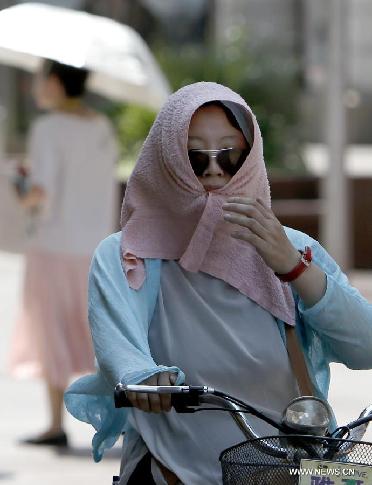40.6 C makes it another record day for Shanghai
 0 Comment(s)
0 Comment(s) Print
Print E-mail Shanghai Daily, August 7, 2013
E-mail Shanghai Daily, August 7, 2013
 |
|
The temperature at a weather observatory in central Pudong New Area hit 41.6 degrees at 1:27p.m. |
Ye Dianxiu, an expert at the National Meteorological Center, said yesterday: "Besides the influence of global warming, the accelerating urbanization, decrease of vegetation cover, expanding city size and increasing population density all contribute to the urban heat island effect, which leads to extreme high temperatures."
Shanghai's air was moderately polluted with an air quality index of 158 yesterday. Ozone was the main air pollutant, and children, the elderly and people with breathing or heart problems were advised to reduce outdoor activities.
City hospitals said the number of patients they were seeing remained high but the temperature dissuaded many non-urgent cases from visiting.
Xia Lin, of the Shanghai Children's Medical Center, said the hospital received about 4,300 patients yesterday. The hospital usually receives more than 3,000 patients a day.
Xinhua Hospital, one of the city's busiest medical facilities, has seen around 10,000 patients a day during the recent hot spell, with most arriving in the morning. The hospital receives about 7,000 patient on normal days.
"We started registration at 6:30am for the better convenience of patients," said Qiu Jiani, a hospital official.
The Shanghai Health and Family Planning Commission was advising people to attend neighborhood health centers or district-level hospitals for common and chronic diseases instead of traveling to larger hospitals.
Near hospitals, the heat was proving a problem for patients waiting for a bus home.
"I felt dizzy after standing for 10 minutes in the sun," said a woman waiting at an unsheltered bus stop near Changhai Hospital.
Passengers said shelters should be installed at every stop.






Go to Forum >>0 Comment(s)